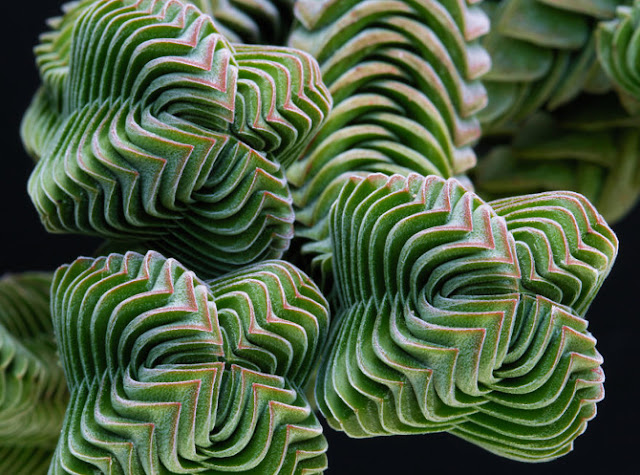"Look deep into nature, and then you will understand everything better."
-Albert Einstein
“[The universe] is written in the language of mathematics, and its characters are triangles, circles, and other geometric figures.”
Looking around, you might imagine that branches, leaves and flowers grow at random, haphazardly. The truth is, however, that the points at which every branch, leaf, stem, bud or petal emerge, have all been set out according to fixed laws and miraculously precise measures. There are patterns everywhere you look in the natural world, the most persistent of which is the Fibonacci sequence. The sequence was first described by ancient Indian mathematicians hundreds of years before the birth of Christ, even though it’s named after the Italian mathematician Leonardo of Pisa, who was more famously known as ‘Fibonacci’. It was Fibonacci’s book “Liber Abaci”, published in the early 13th century, that introduced this magical sequence to the Western world.
All plants are geometrical one way or the other. However, there are plants whose geometry is more pronounced than others. Here are some famous examples.
1. Aeonium Tabuliforme
2. Agave
3. Aloe Polyphylla
4. Alstroemeria Pelegrina
5. Amazon Lily Pad
6. Araucaria Arucana
7. Camelia
8. Chameleon Tail
9. Crassula Buddha's Temple Plant
10. Dahlia
11. Drosophyllum Lusitanicum
12. Fern
13. Finonacci Garden
14. Fractal Cabbage
15. Lobelia
16. Ludwigia Sedioides
17. Passiflora Caerulea
18. Pelecyphora Aselliformis
19. Romanesco Broccoli
20. Spiral Begonia
21. Spiraling Succulent
22. Succulents
23. Sunflower
24. Thinking Cactus
25. Viola Sacculus
Editors' Recommendations:
Robert Gonsalves' Mind-Bending Optical Illusion Art
Incredible Series Of Photos Of Mongolian Reindeer People
7 Amazing Things You Won’t Believe Actually Exist In Nature
15 Photographs Of The Unlikely Sweet Friendship Of A Dog And An Owl
Touching Time-Lapse Of Rescued Puppy Growing Into Adulthood
sources: Timewheel, Amusing Planet
-Albert Einstein
“[The universe] is written in the language of mathematics, and its characters are triangles, circles, and other geometric figures.”
-Galileo Galilei
The Fibonacci sequence is so simple it’s almost baffling. Here each number is created by adding together the previous two, so starting from 1 1 2 3 5 8 13 21… it continues to infinity. The Fibonacci sequence is so persistent in nature that it’s a challenge to find a plant or fruit structure that does not conform to it. For instance, the placement of leaves along a stem is governed by the Fibonacci sequence, ensuring that each leaf has maximum access to sunlight and rain. The same principle is at work in the formation of pine cones, sunflowers, pineapples, and cacti. The Golden Ratio, which you might have heard before, is just another manifestation of the Fibonacci sequence.
All plants are geometrical one way or the other. However, there are plants whose geometry is more pronounced than others. Here are some famous examples.
1. Aeonium Tabuliforme
2. Agave
3. Aloe Polyphylla
4. Alstroemeria Pelegrina
5. Amazon Lily Pad
6. Araucaria Arucana
7. Camelia
8. Chameleon Tail
9. Crassula Buddha's Temple Plant
10. Dahlia
11. Drosophyllum Lusitanicum
12. Fern
13. Finonacci Garden
14. Fractal Cabbage
15. Lobelia
16. Ludwigia Sedioides
17. Passiflora Caerulea
18. Pelecyphora Aselliformis
19. Romanesco Broccoli
20. Spiral Begonia
21. Spiraling Succulent
22. Succulents
23. Sunflower
24. Thinking Cactus
25. Viola Sacculus
Editors' Recommendations:
Robert Gonsalves' Mind-Bending Optical Illusion Art
Incredible Series Of Photos Of Mongolian Reindeer People
7 Amazing Things You Won’t Believe Actually Exist In Nature
15 Photographs Of The Unlikely Sweet Friendship Of A Dog And An Owl
Touching Time-Lapse Of Rescued Puppy Growing Into Adulthood
sources: Timewheel, Amusing Planet



























.jpg)





.jpg)



.jpg)





.jpg)


